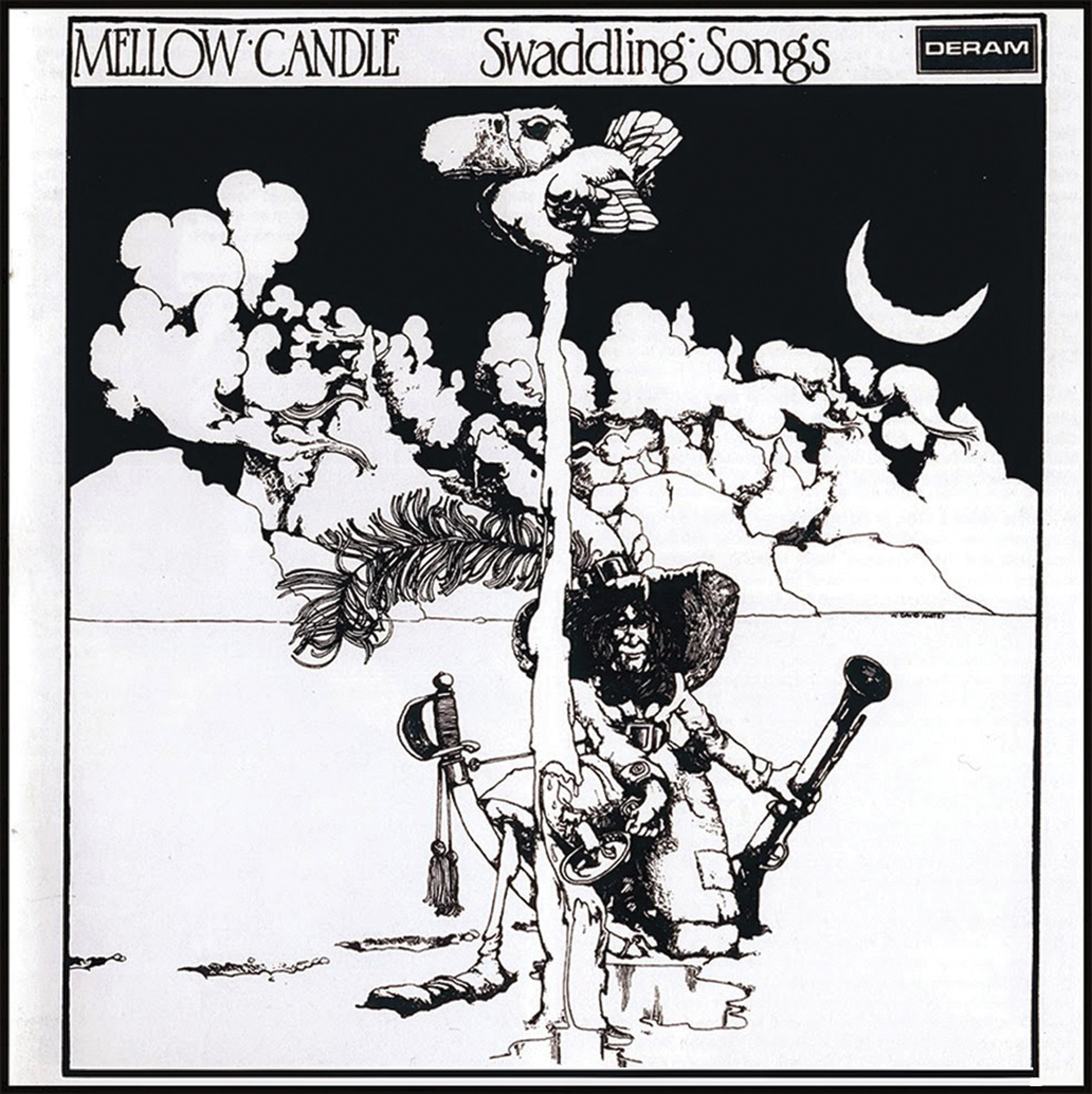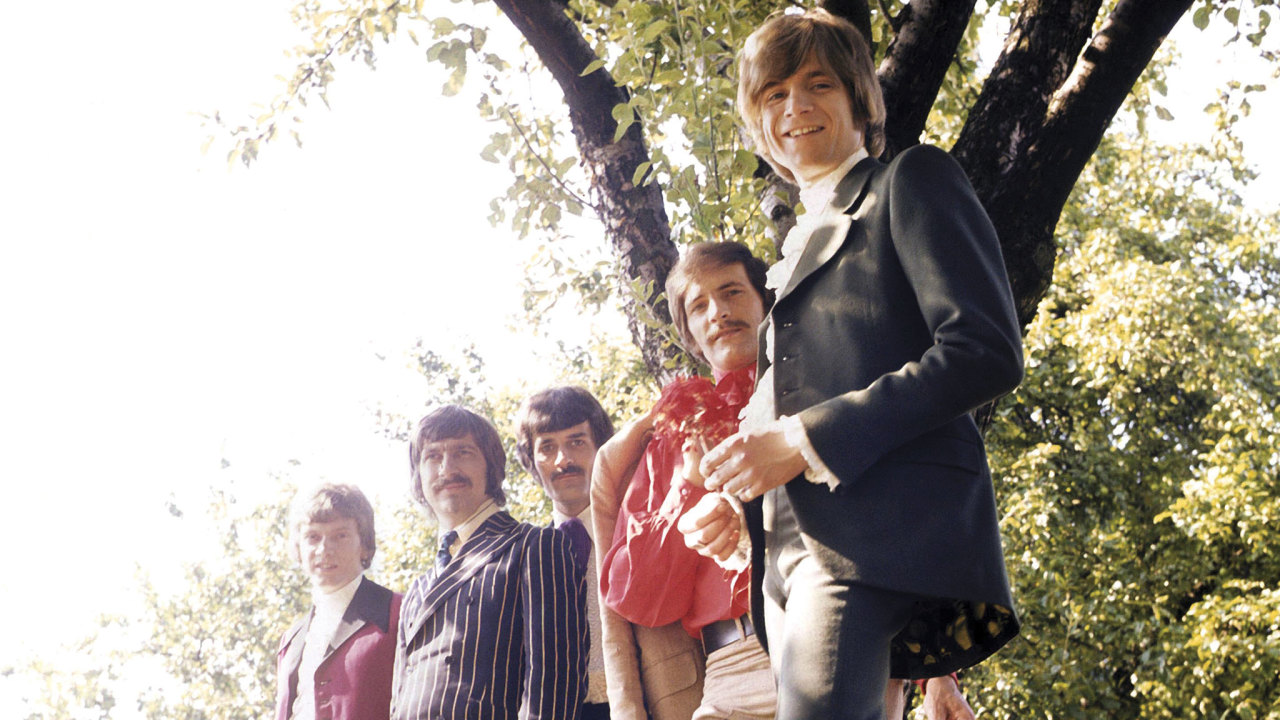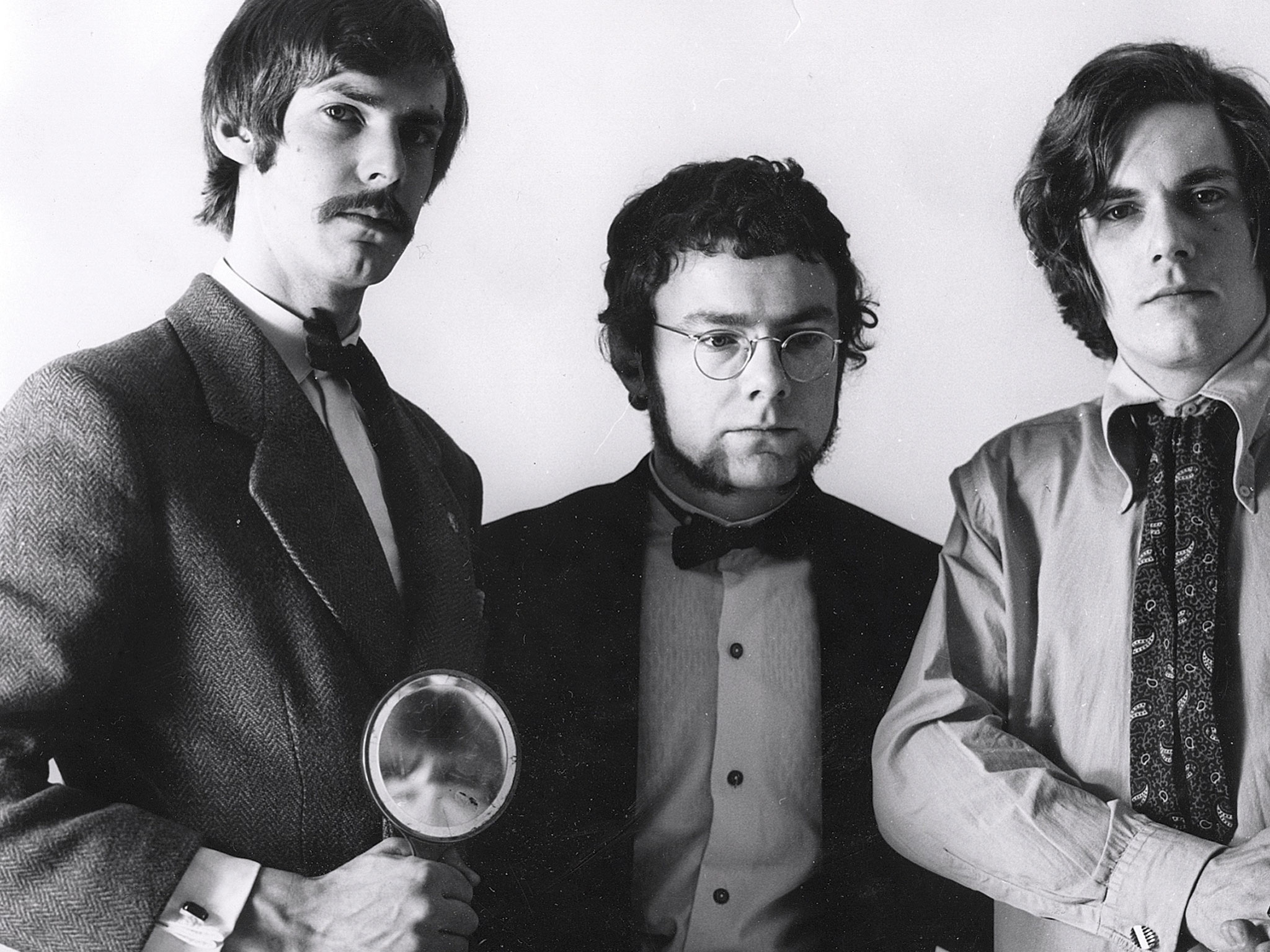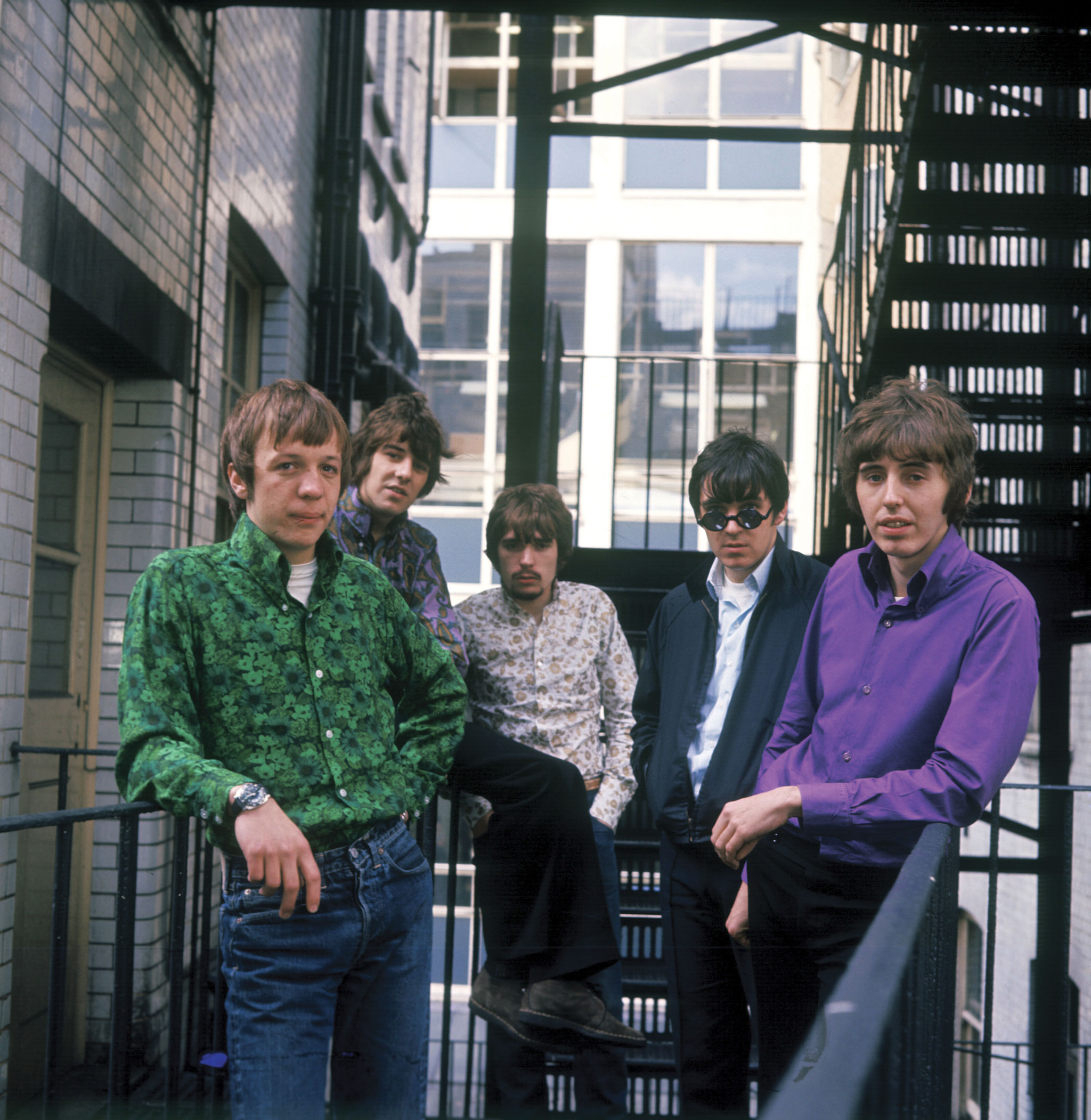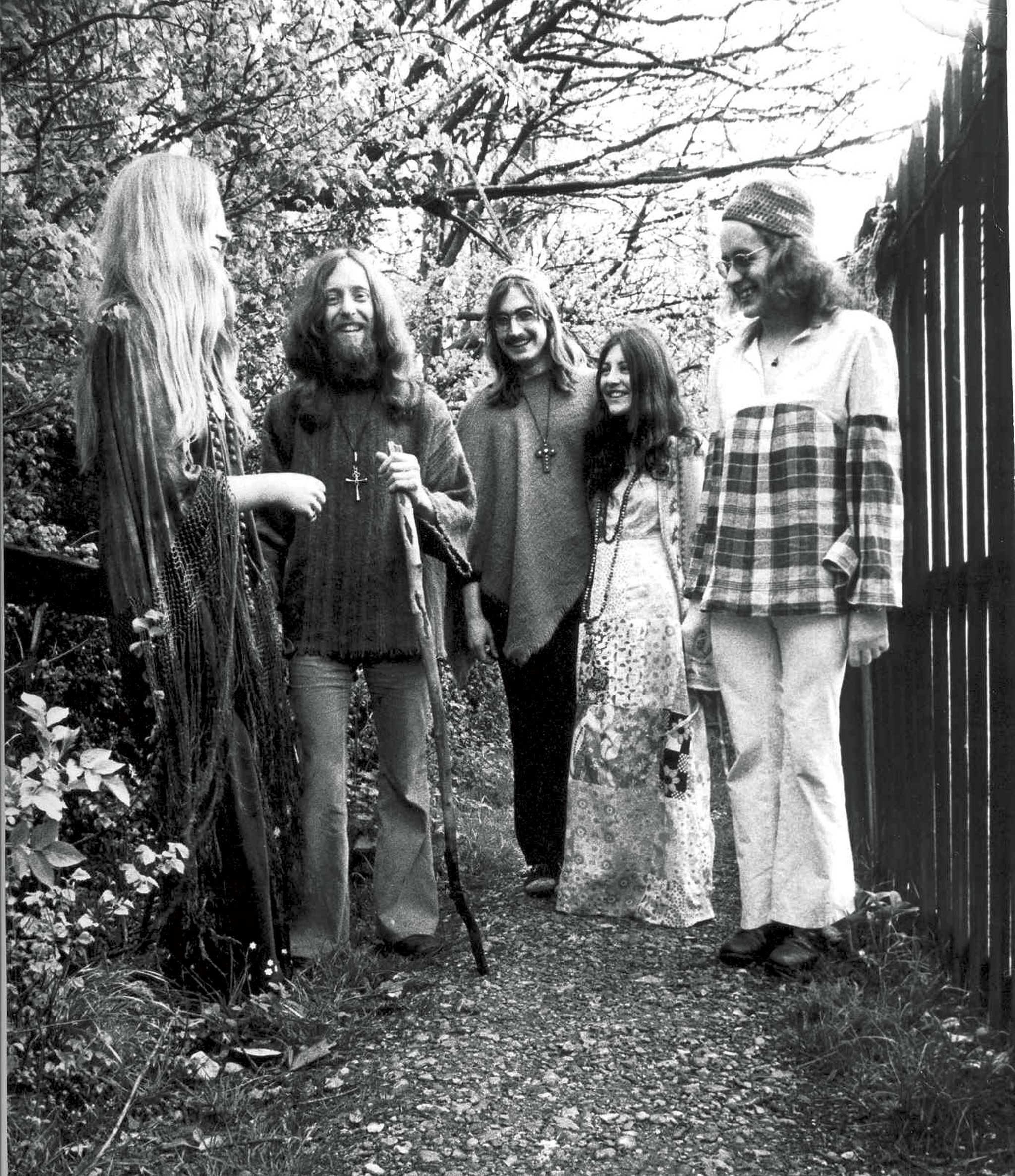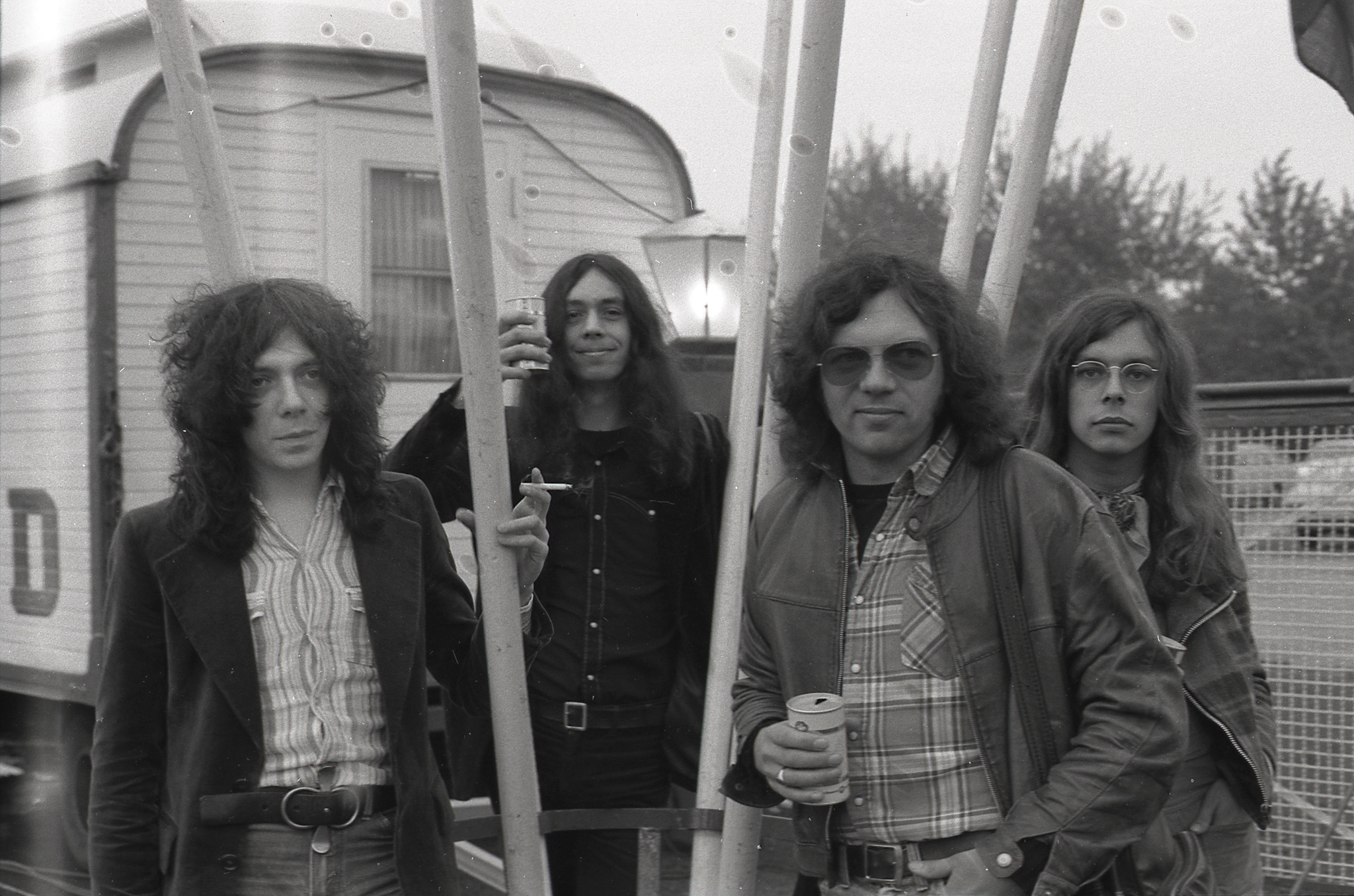Founded in 1966, Deram holds an unparalleled place in the hearts of prog aficionados as it is frequently cited as being the original ‘out-there’ imprint, the one that saw a stuffy major label allow its hair to grow over its collar and loosen its tie.
However, it seems less loved than fellow travellers such as Vertigo or Harvest. This is partly because of its affiliation with British establishment label Decca, which, although by the mid 60s had ultimate bad boys The Rolling Stones on their books, forever appeared to symbolise the ultimate ‘straights’ label. This was due not only to having those far-out cats The Bachelors, Mantovani and Val Doonican recording for them, but for their notorious shooting-themselves-in-the-foot action of turning down The Beatles in 1962.
Founded in 1929, Decca, primarily a classical recording label, had burgeoned thanks to the involvement of stockbroker Edward Lewis and also its pioneering work with sound technology and success with a portable record player. In 1934, Decca became the first UK company to establish an America subsidiary. Although the Decca imprint was sold to MCA in the US in the 40s, Lewis established London Records for America in 1947. By the late 60s, the original management team was more or less intact at Decca, and Deram was to be its first new UK imprint – and one that could be exported worldwide.
Moreover, Decca appeared to operate Deram loosely, so their releases could alternate between Deram, Decca or, for a while in 1969, Nova, Decca’s short-lived answer to Harvest and Vertigo. Deram was not exclusively underground, as it released a range of easy listening albums and bubblegum pop singles. The wealth of talent that recorded for Deram remains remarkable – The Moody Blues, David Bowie, Cat Stevens… but they were set amid so many other releases – and unlike Harvest, Island or Charisma’s diversity, many of these artists simply were not cool.
**HOW IT BEGAN: **
As Decca had pioneered the FFRR (Full Frequency Range Recording) method in the 1950s, sound development was utmost in the company’s thoughts. ‘Deramic Sound’, a process involving two four-track recorders to record and then blend the results, was the new thing. The name Deram itself is said to derive from ‘Decca Panoramic Sound’.
The label was the brainchild of Decca executive Tony Hall, who had also worked as a promotions man, and could see the change in direction of the music business, after working with independent producers such as Denny Cordell and Andrew Oldham. Hugh Mendl was one of the main players in A&R, the grandson of original Decca Chairman, Sir Sigismund Mendl. Both would be instrumental in the establishment of Deram.
Deram started in September 1966 as a predominately pop-based label with singles by Beverley Martyn, Cat Stevens, David Bowie and Whistling Jack Smith. A news piece in _Melody Maker _stated that: “Decca Records are launching a new label, described as a ‘hip label for groovy people’.” Hall said that Deram would have “all the enthusiasm of an independent with all the power and promotion behind it of a major company.”
Deram scored some speedy chart success with hits from Stevens and, thanks to a distribution deal with Denny Cordell’s production company Essex/Straight Ahead, its first and only No.1 single with Procol Harum’s epochal A Whiter Shade Of Pale. In its first year, Deram had hit the ground running, and its output was clearly different from Decca’s pop and easy releases by Engelbert Humperdinck and Tom Jones. But it also meant that anything Decca executives found difficult to categorise ended up on the imprint.
Although not the first LP releases on the label (David Bowie and Cat Stevens would have albums out before), the initial series of ‘Deramic Sound’ albums in 1967 were clearly to be the imprint’s flagship. The easy, string-based sounds of Les Reed and Tony Osborne made up the series.
One of the most significant steps forward, though, was switching The Moody Blues from Decca to Deram with ’67’s Days Of Future Passed, their first release featuring Justin Hayward and John Lodge. The album was commissioned by A&R man and producer Mendl for the Deramic Sound series, with the initial idea of rewriting Dvorak’s Ninth Symphony as rock music. Instead the group used the time to record a new work. The only concession, remarkable when you see the sleeves together, is that the design of Days Of Future Passed is in the style of the rest of the Deramic Series.
The broad symphonic sweep of the orchestration and the anthemic single Nights In White Satin showed that the label could produce quality albums in this new age of the long player. As Mendl himself wrote in the notes: “In Days of Future Passed, The Moody Blues have at last done what many others have dreamed of and talked about: they have extended the range of pop music, and found the point where it becomes one with the world of the classics.” For this reason it has been frequently cited as the first progressive rock album.
Mendl was able to siphon off some of the label’s pop profits for album releases by Alvin Lee’s Ten Years After, Keef Hartley (both of which showed Deram’s rock credentials), John Surman and Caravan, who defected from Decca. The psych-strangeness of Egg gave the label underground kudos. Producers David Hitchcock, Neil Slaven and Wayne Bickerton would ensure that an ear was kept to the ground for the latest vibrations.
Through Bickerton, Deram even released the recordings of Giles, Giles And Fripp in 1968, offering the first stirrings of a proto-King Crimson. “It was no accident,” said Edward Lewis, discussing Deram in Billboard in May 1968. “It was a careful team effort. There was so much product coming into us that we felt if we had another label we could get exposure plus an image internationally for releasing something different, but strong.”
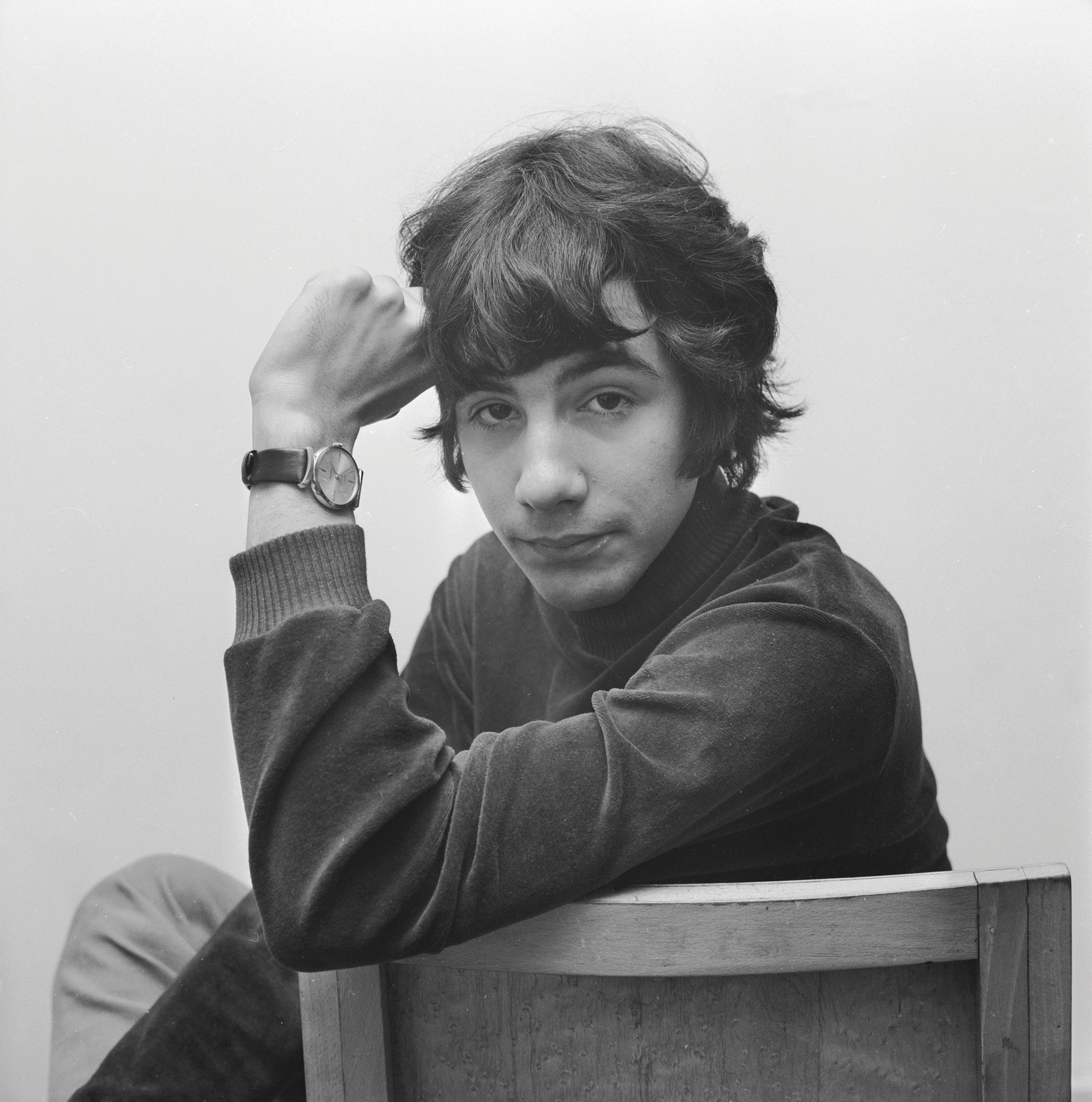
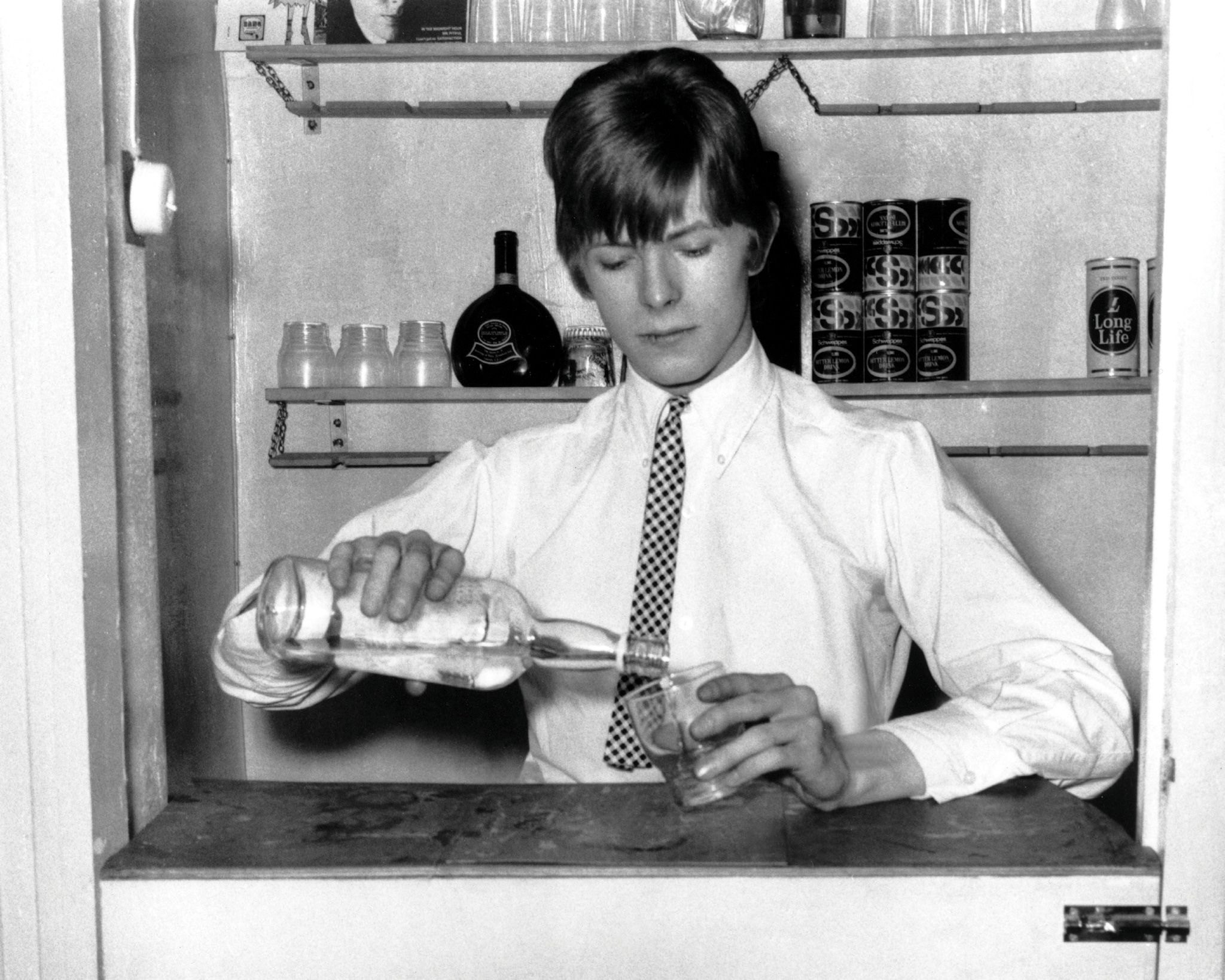
THE GOLDEN PERIOD:
This was undeniably the late 60s into the early 70s, with The Moody Blues firing on all cylinders. Before leaving to establish their own label, Threshold, they gave the label its first No.1 album, On The Threshold Of A Dream. Other majors raced to create their own eclectic in-house imprints; EMI with Harvest and Philips with Vertigo.
Caravan’s move to Deram saw a run of highly melodic, idiosyncratic and inventive albums, with 1971’s In The Land Of Grey And Pink becoming the go-to album for those who liked their prog on the whimsical side. Bristol-based underground outfit East Of Eden hit the UK Top 3 in 1971 with their Romany-influenced hit Jig-A-Jig, which was quite unlike anything else in their catalogue, and led to violinist Dave Arbus playing on The Who’s Baba O’Riley later that year.
A cursory look at the release schedules finds some of the most interesting and diverse releases of the era from Mike Westbrook, Frijid Pink, Johnny Almond Music Machine, Mellow Candle and Clouds. But then there was still a lot of bubblegum at the poppier end of the scale from White Plains and Honeybus. To demonstrate it wasn’t all out there, the decidedly ‘in here’ Brotherhood Of Man in their first incarnation released an album on Deram, as did the fabulous US born, UK-resident soul trio, The Flirtations.
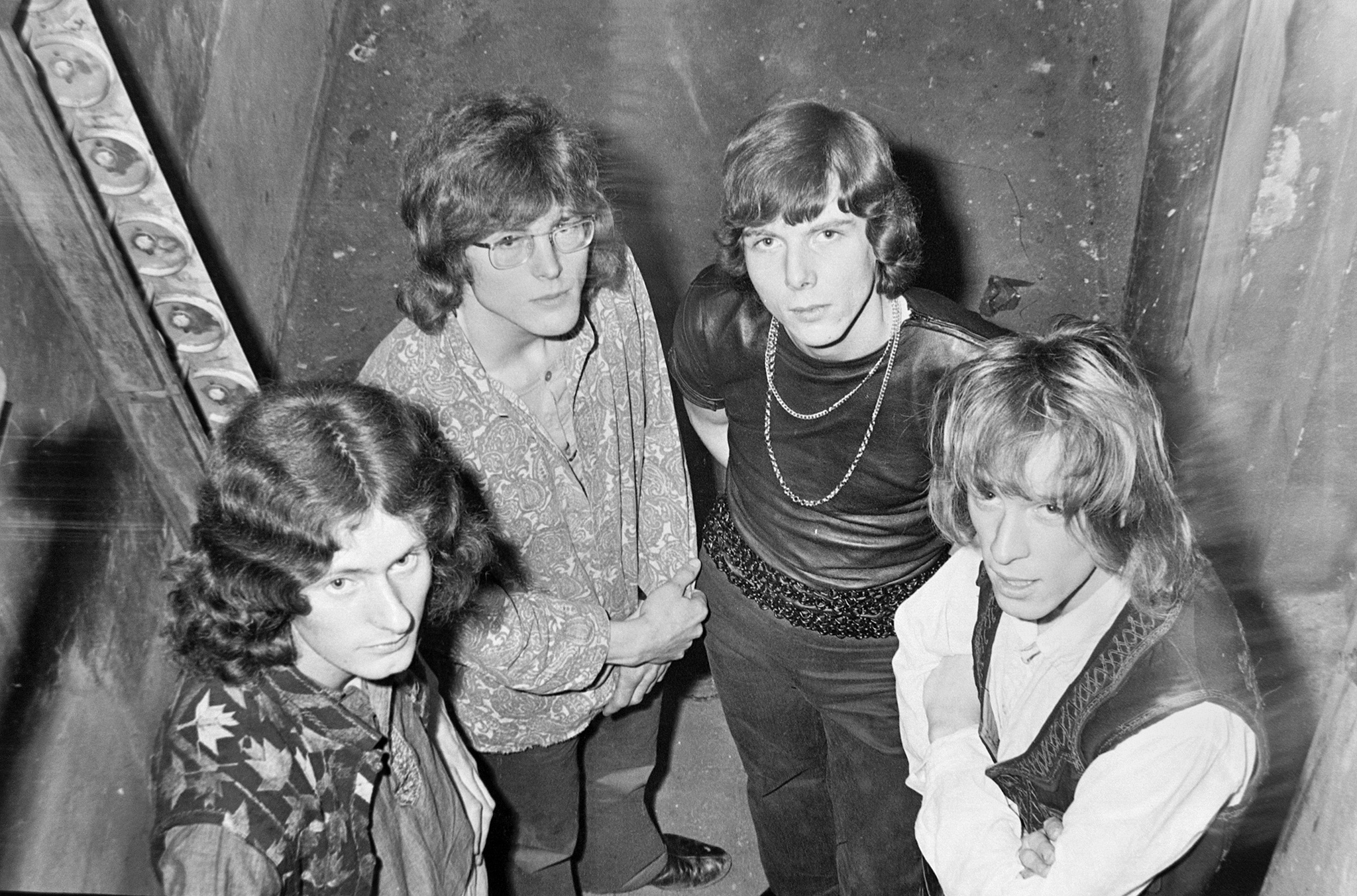
WHAT HAPPENED NEXT:
After The Moody Blues went to their own imprint, Ten Years After departed for Chrysalis in 1971 and East Of Eden headed to Harvest the same year. Unfortunately, Deram never had a group as big as Pink Floyd or Genesis to buoy up operations, and visibility and the label itself seemed to falter.
Deram effectively finished in the mid-70s with hit singles by ex-Marmalade singer Junior Campbell, but was still employed for a few selected releases. Camel released one of the label’s last significant prog albums, Mirage, in 1974, before going over to the parent label. When Caravan’s Cunning Stunts appeared on Decca in early 1975, it ended a run of four albums on the Deram label. One of the last major releases on the imprint was, ironically, Songwriter, a solo album by The Moody Blues’ Justin Hayward.
Because of Edward Lewis’ reluctance to ever play ball with the rest of the music industry and his disinclination to adapt, other labels were burgeoning and Decca was losing serious ground. Long in freefall, Decca was bought by PolyGram on Lewis’ death in 1980, and they actually briefly revamped Deram. Pop punks Splodgenessabounds enjoyed a Top 10 hit with Simon Templar (propelled by its rambunctious B-side Two Pints Of Lager And A Packet Of Crisps, Please) and new wavers B-Movie and TV21 also released singles on Deram. Roger Ames then headed up the label, separated out all of the classical and easy listening to Decca while reviving the London imprint with Bananarama, Bronski Beat and Fine Young Cannibals.
TODAY:
The historical releases on Deram and its parent, Decca, are now part of Universal Music’s catalogue wing. A variety of compilations of the label’s output have been made available, as well as extensive release programmes of key artists’ work. The Moody Blues and Caravan especially have been extensively repackaged, but it’s not just the headline acts; Egg’s The Polite Force from 1971 was reissued on 180gm vinyl in 2014. Decca itself still exists as a division of Universal and labels itself ‘The Home Of Diverse Music’, with artists such as Alfie Boe, Andrea Bocelli and The Lumineers.
WHY SHOULD WE CARE:
Deram in many respects provided the route map for future semi-autonomous imprints within major labels. Tony Hall’s comment that Deram should have “all the enthusiasm of an independent with all the power and promotion behind it of a major company” has been adopted right from EMI creating Harvest through to Universal running Fiction as a separate label, or even – and this may be the only time this is ever written in this magazine – Simon Cowell’s company Syco within Sony.
**Further Listening: **The Deram albums and tracks you need to hear.
Legend Of A Mind:The Underground Anthology
(album, Decca/Universal Music Catalogue, 2002)
STRANGE PLEASURES: Further Sounds Of The Decca Underground
(album, Decca/Universal Music Catalogue, 2008)
Two three-disc overviews of the progressive side of the Decca, Deram and Nova labels in the 60s and 70s. A perfect place to start your Deram travels.
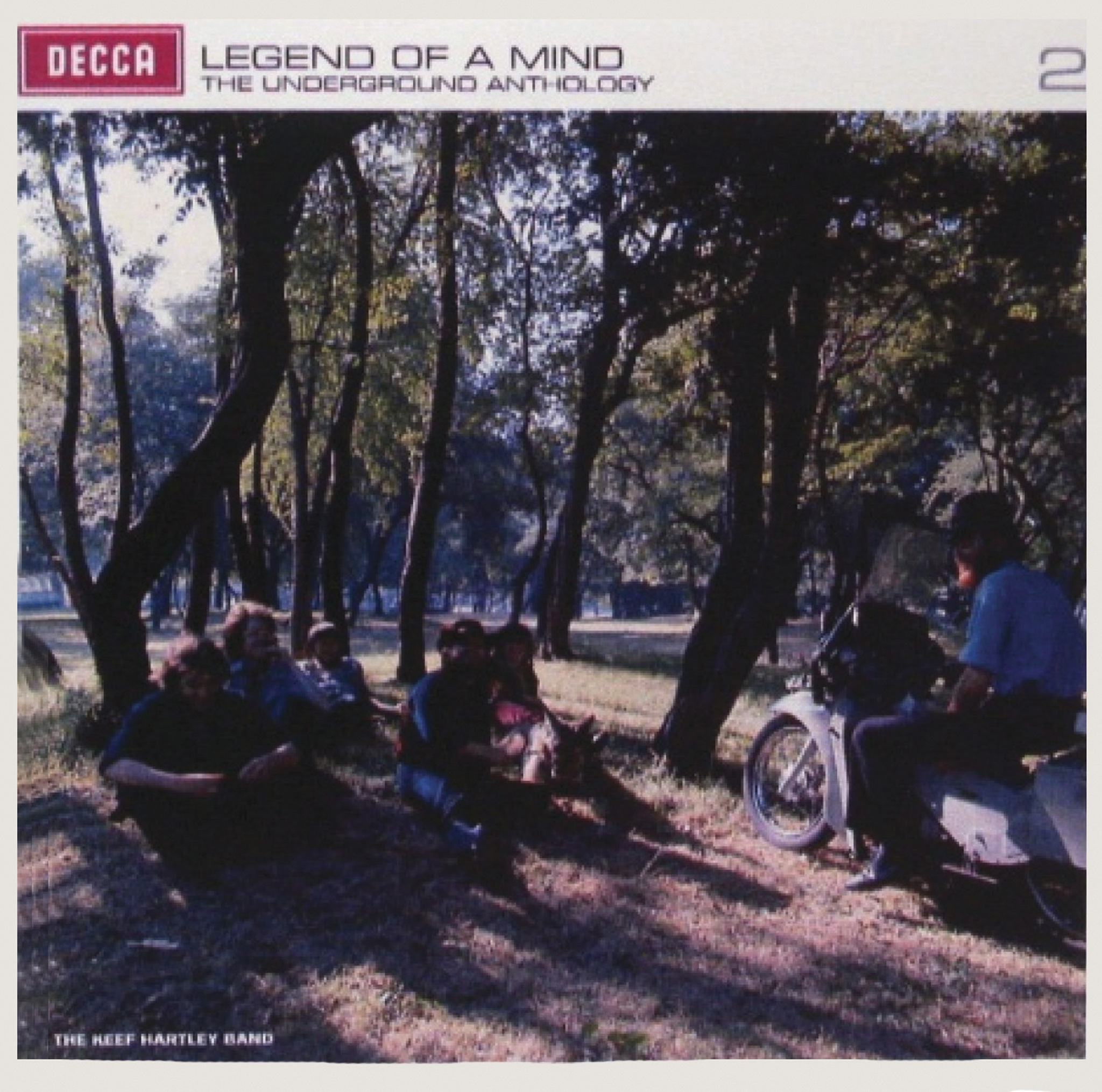
**A Whiter Shade Of Pale **
**Procol Harum **
**(single, 1967) **
Although merely licensed to it, A Whiter Shade Of Pale was Procol Harum’s only release on Deram, but – heavens! – what a single to have released. Along with Sgt Pepper by The Beatles, A Whiter Shade… exemplified the sound of ’67.
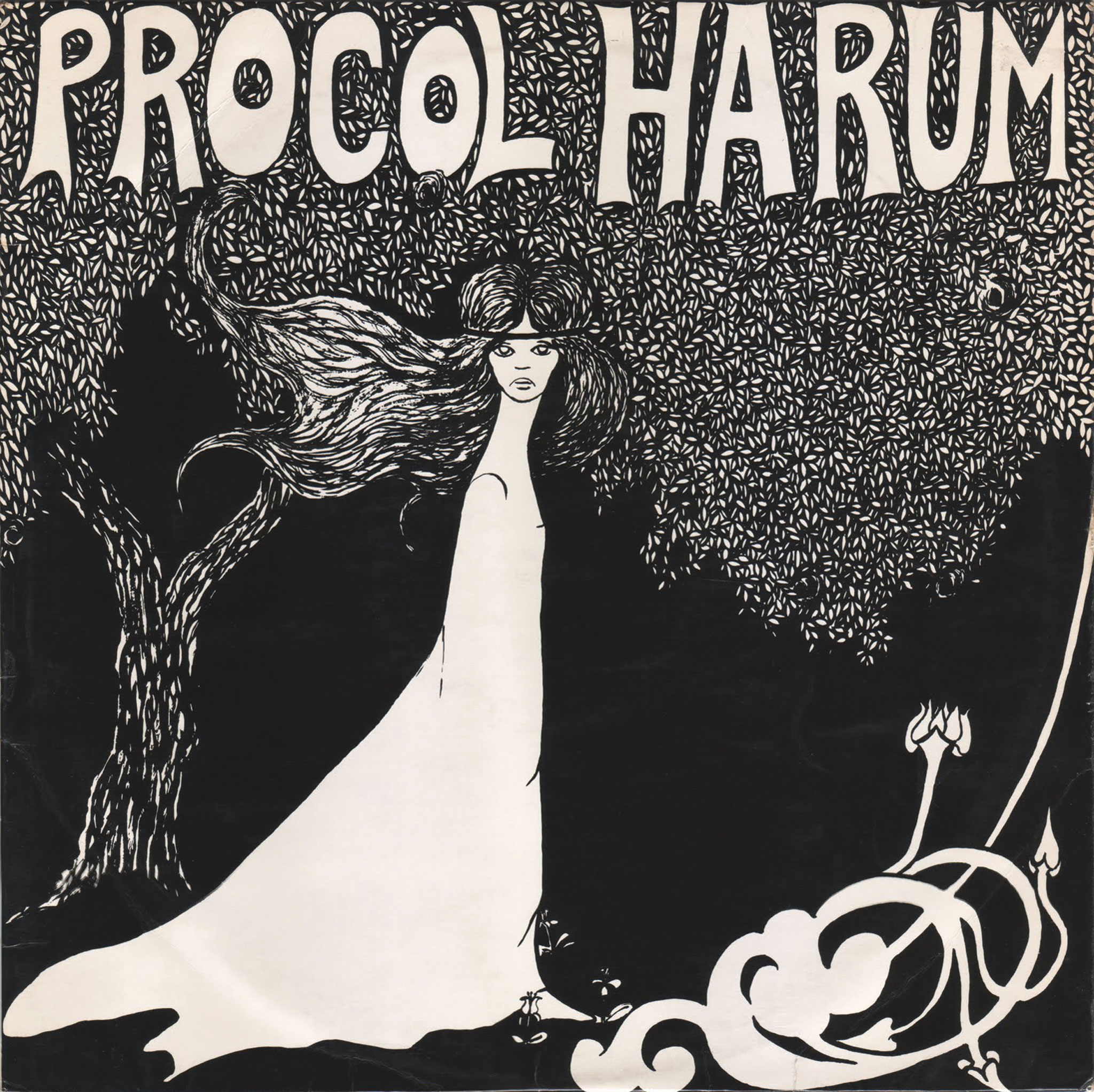
**Nights In White Satin **
**The Moody Blues **
(from Days Of Future Passed, 1967)
If Procol Harum had shown the way on single, then the symphonic rock of The Moody Blues offered a glimpse of how the parameters of the album could be extended and developed. However, the greatest experimentation would be a heads-only footnote had it not contained this towering ballad, a worldwide hit, setting up Justin Hayward as prog’s premier romantic balladeer.
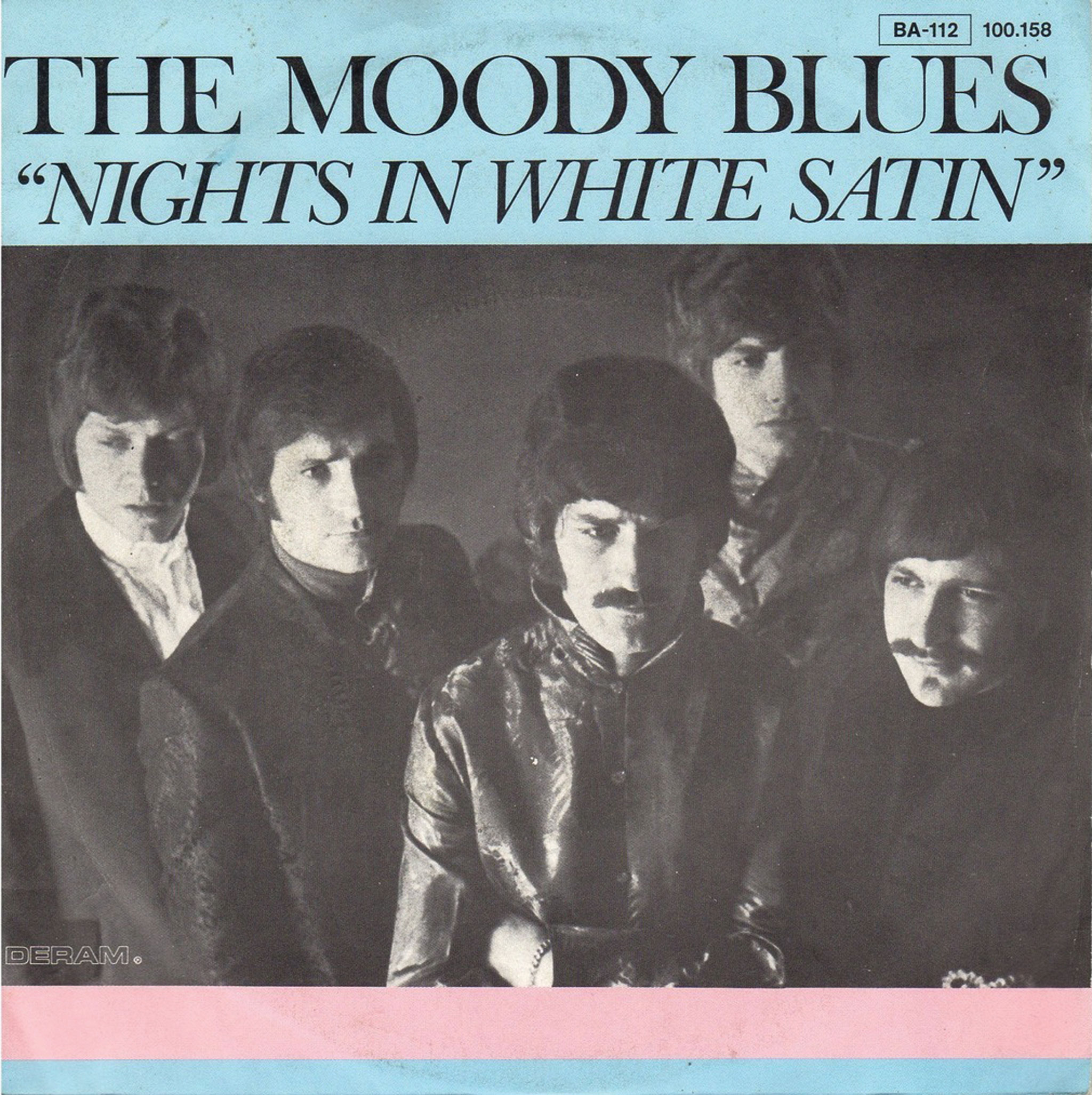
**Suite No. 1 **
Giles, Giles and Fripp
(from The Cheerful Insanity Of Giles, Giles And Fripp, 1968)
The first time the world heard Robert Fripp’s guitar playing was on this eccentric little album, of which Suite No. 1 acts as a gentle pointer to what was to come the following year with King Crimson.
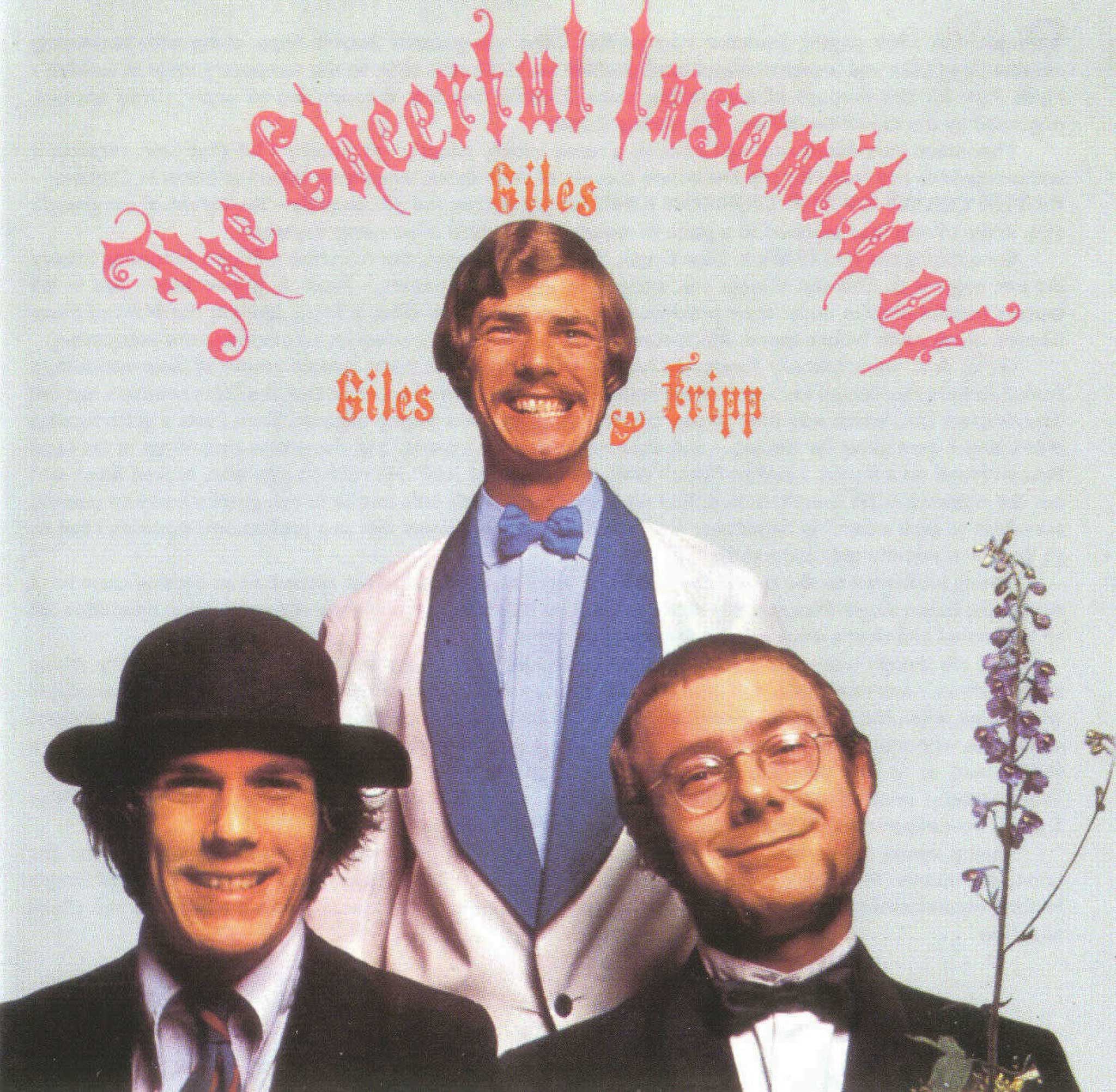
**Golf Girl **
**Caravan **
**(from In The Land Of Grey And Pink, 1971). **
Caravan’s third album, In The Land Of Grey And Pink, marked the point when Caravan truly came of age. Golf Girl (also the B-side of their Love To Love You single) is full of English whimsy, and underlines exactly why the group and this album are so fondly recalled today.
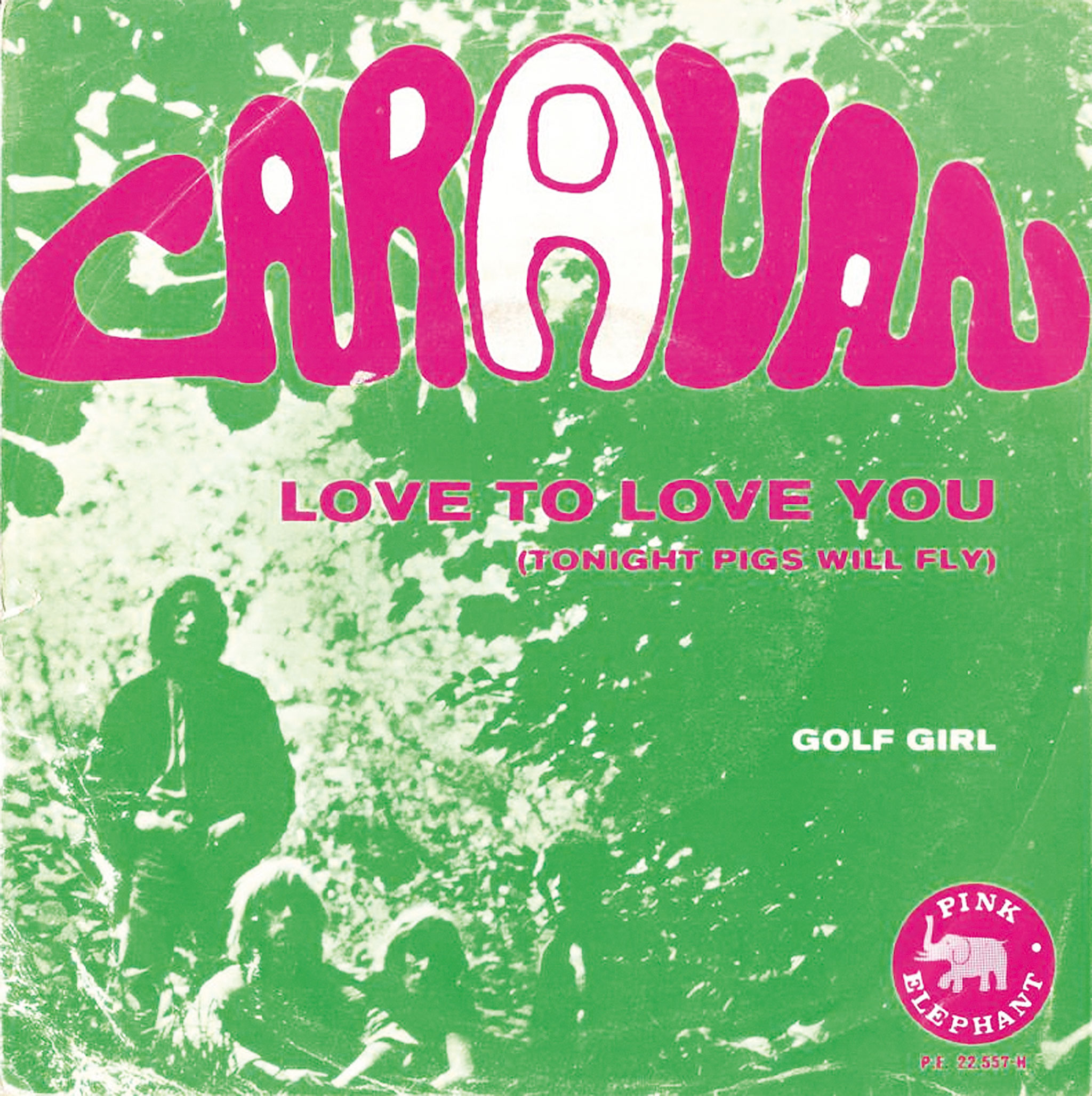
Boulders On My Grave
Mellow Candle
(from Swaddling Songs, 1972)
Mellow Candle were still at school when they formed in 1968. By ’72, and with an expanded line-up, they were at the nexus of traditional Irish folk and prog. This incessant and propulsive obscure groove still has collectors salivating, with a copy of its parent album recently being sold for £1500.
